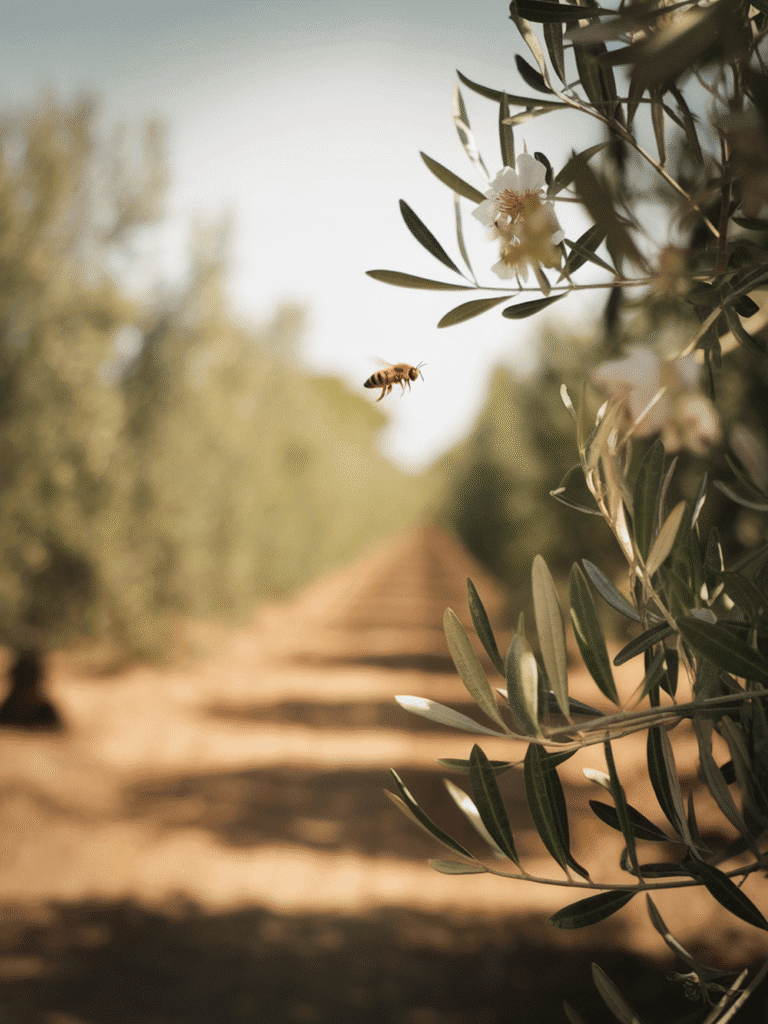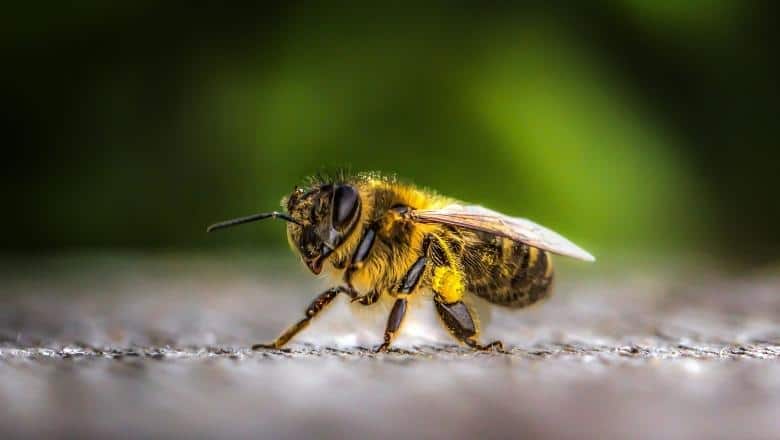Do Bees Pollinate Olive Trees?
Olive Knowledge is a part of Amazon Associates. As an Amazon Associate, we earn from qualifying purchases. Read our Affiliate Disclosure to learn more.
Bees are famous for helping trees and flowers grow, but what about olive trees?
In this post, we’ll explore how olive trees are really pollinated, what science says about the role of bees, and what olive growers have actually observed in their groves.
Key Takeaways:
- Olive trees are mostly wind-pollinated and don’t rely on bees.
- Olive tree flowers don’t produce much nectar, so bees rarely visit them.
- However, bees can boost pollination when the wind is weak or inconsistent.
- Some growers have reported better fruit set when bees are active in their orchards.
- Even if they don’t need bees, olive trees can still benefit from having them around.
Do Bees Pollinate Olive Trees?

Most of the time, no, bees don’t directly pollinate olive trees the way they do with flowers like lavender or fruit trees like apples.
Olive trees are designed for wind pollination. Their tiny flowers release a lot of dry, lightweight pollen that gets carried by the breeze from tree to tree.
That said, some studies and growers have noticed better fruit set when bees are present during blooming. It’s believed that bees can help stir and transfer pollen, especially when the air is still and there’s not much wind.
In one study, trees visited by bees had more olive fruit compared to the same trees that were covered and kept away from bees.
So while they’re not essential pollinators, bees might be silent helpers, especially in calm weather.
What Kind Of Flowers Do Bees Like?
You might wonder why bees rarely visit olive trees. Well, it’s because olive flowers don’t check the boxes bees usually look for in a flower.
Bees like blue, yellow, and purple flowers the most. Some examples are lavender, clematis, and sunflowers. Bees like these colors because they are rich in nectar. The nectar is sweet, sticky, and full of nutrients. These nutrients are important because they help the bees make honey!
In general, bees prefer a diversity of flower types because different flowers provide different sources of nectar and pollen. Nectar is the main source of carbohydrates for bees. Pollen is the main source of fat and protein in a bee’s diet.
Olive Trees Are Pollinated By Wind
Olive trees rely mostly on anemophily — a fancy word for wind pollination. That means no insects are needed to carry the pollen around.
Each mature olive tree can produce up to 500,000 tiny flowers, but only 1–2% of them ever become actual olives. That’s about 5,000–10,000 olives per tree, depending on conditions.
For pollination to succeed, a light breeze is usually enough. But if it’s too calm or too windy, things can go wrong. High winds can knock off petals, while no wind means pollen doesn’t travel far.
Related: When Do Olive Trees Bloom
Honey Bees Sometimes Visit Olive Farms

When it comes to honey bees, olive orchards are not the first place that people would think of. Olive trees don’t produce nectar like other flowering plants, so most of the time, honey bees will pass them by in search of something more sugary.
However, sometimes, if they lack food and water, you can expect honey bees to visit olive orchards for a few days. That’s completely normal. In fact, it’s happening more frequently in the last few years.
I spoke to a few olive growers, and all of them wished that they had more bees during the olive tree pollinating season. They could improve the olive tree pollination.
Even though olive flowers don’t offer much nectar, they do produce plenty of pollen, which can still attract bees when other food is scarce. Some growers even say that bee presence leads to more consistent pollination, especially in years with poor weather during bloom.
So, hopefully, we’ll see more bees around olive trees in the future.
Do Olive Growers Actually Use Bees?
Surprisingly, some olive farmers intentionally place beehives near their groves.
While it’s not standard practice like in almond or apple farming, these farmers believe bees can help improve fruit set, especially in olive varieties that respond well to cross-pollination.
Varieties like Frantoio or Leccino, for example, are more productive when other cultivars are nearby and when there’s some insect activity to assist.
It’s not about bees doing all the work, but they might just help give that extra boost when nature doesn’t deliver perfect wind conditions.
FAQ
Not really. Olive trees rely mostly on wind to spread their pollen. However, bees can still help improve pollination under certain conditions, especially when there’s not enough wind movement.
Olive flowers produce very little nectar and aren’t colorful, so they’re not attractive to bees. But during times of nectar scarcity, bees might still visit them for their pollen.
Possibly. While olive trees aren’t a great nectar source, they do release lots of pollen — which bees may collect if other food is scarce.
Conclusion
Even though bees aren’t crucial for olive trees, their presence in olive groves is more helpful than most people think.
If you’re growing olives, and you see bees buzzing around, consider it a bonus from nature. And if you’re a beekeeper, olive trees might be worth a closer look after all.
Similar Articles:
